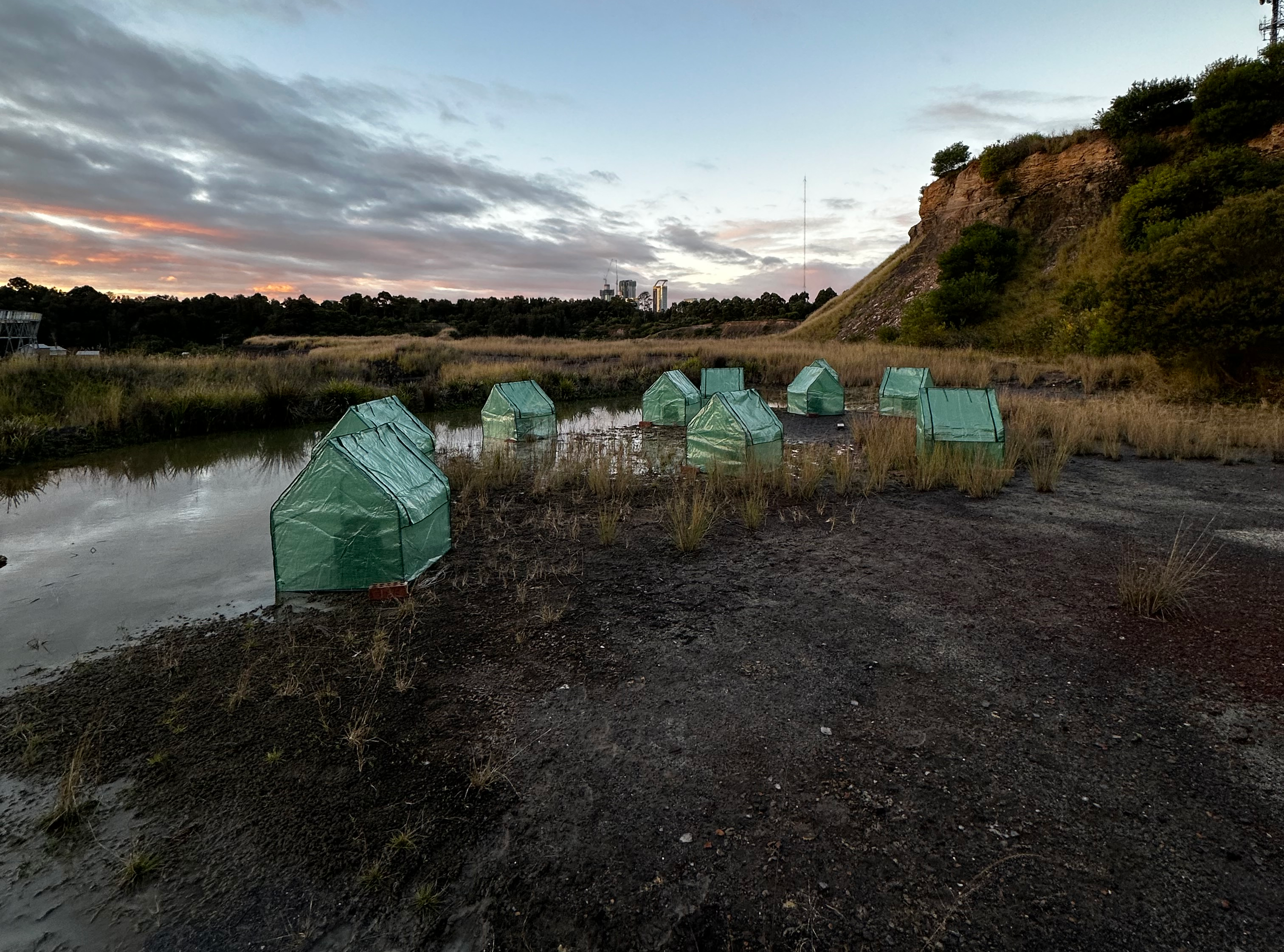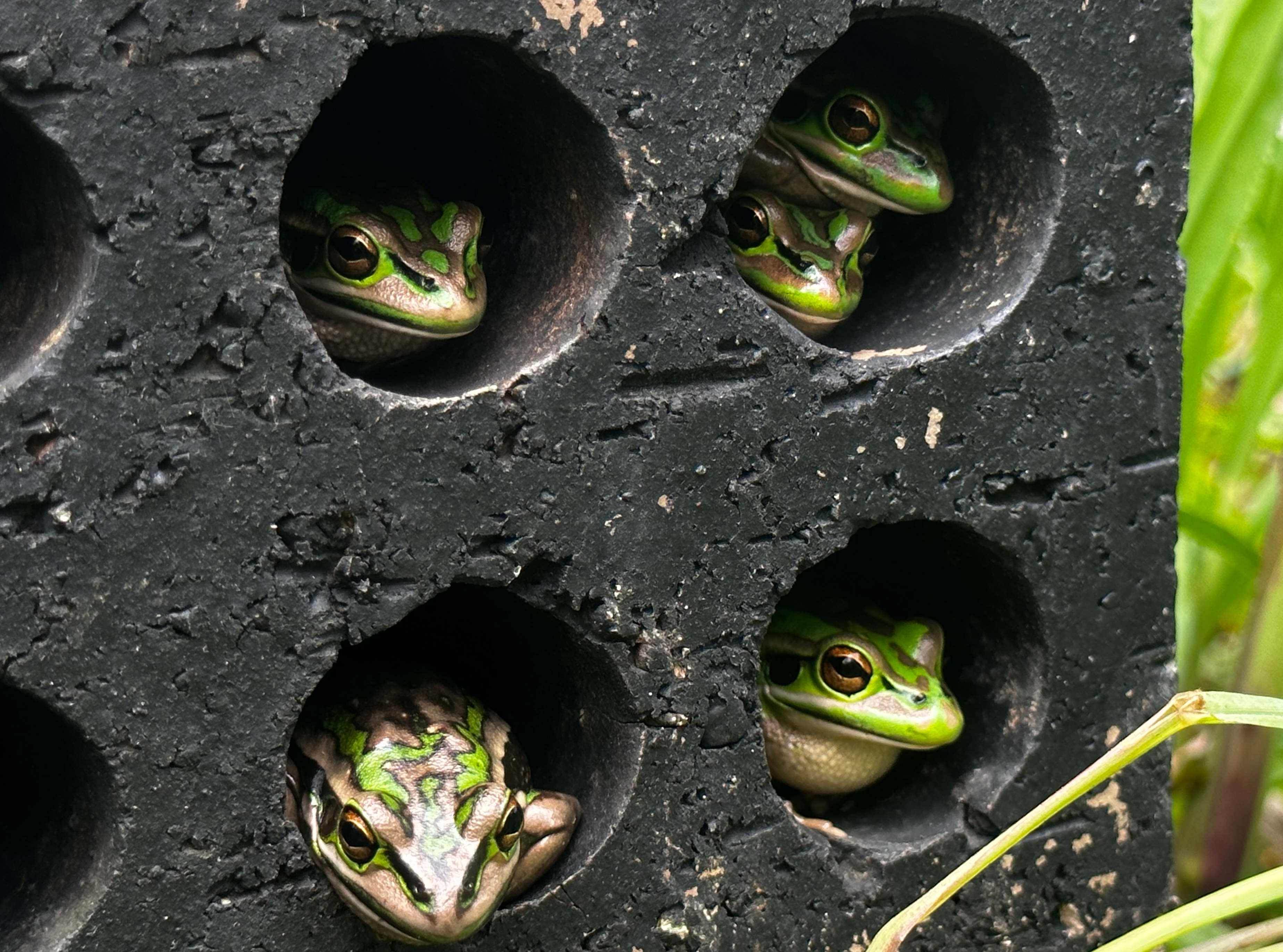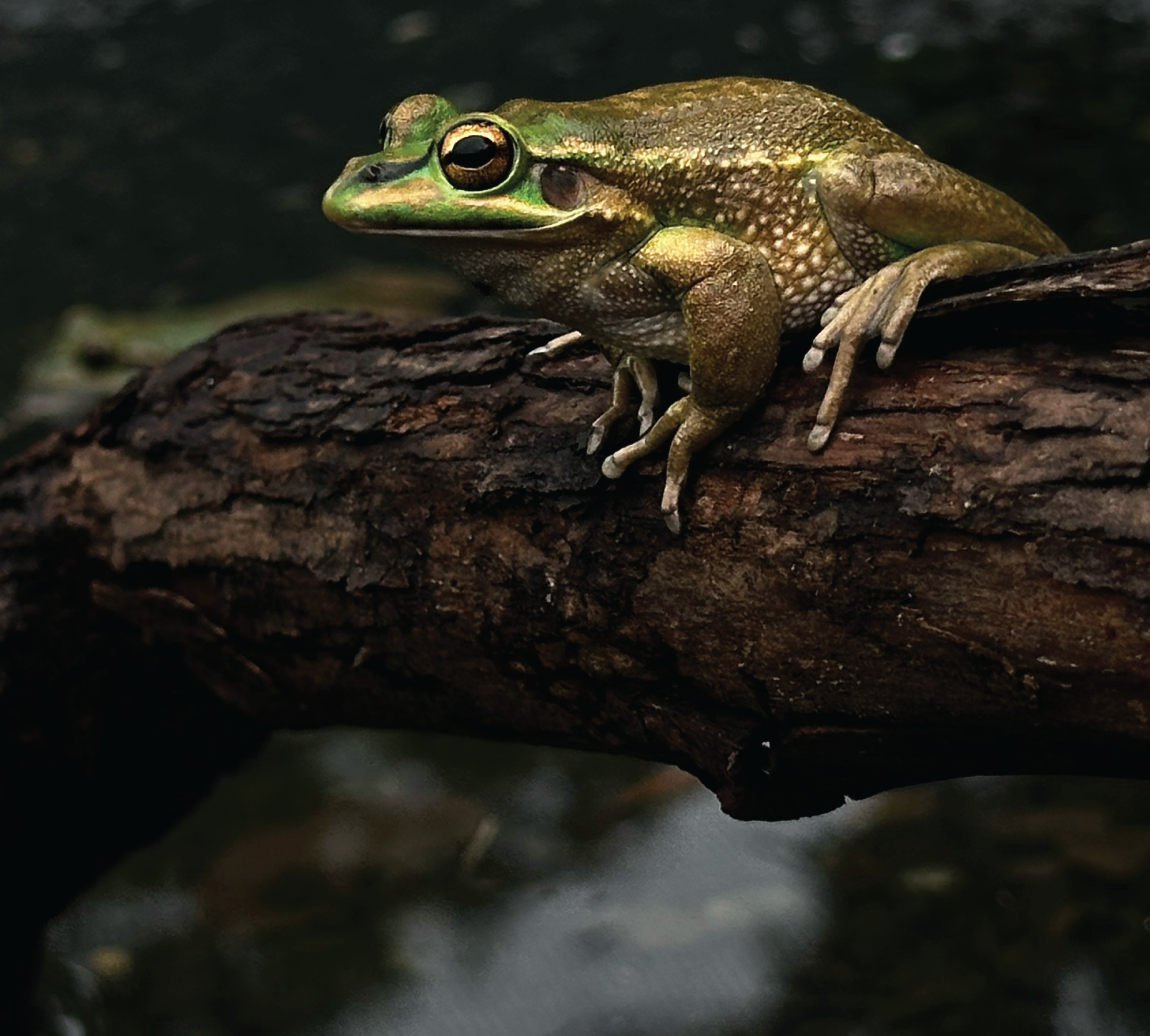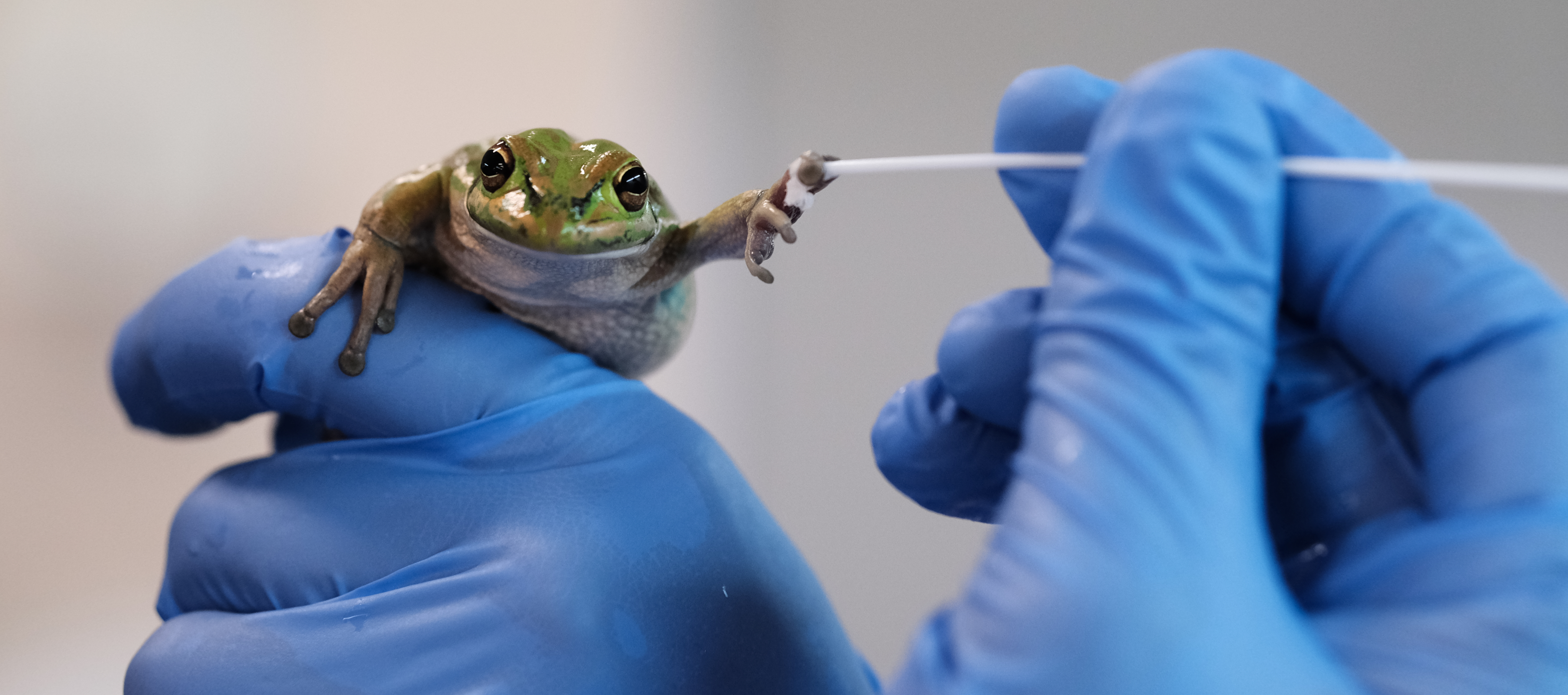Low-cost miniature greenhouses could save one of Australia’s most beloved frogs from extinction, and the technique may prove applicable to many of the hundreds of other species under threat from an introduced fungus.
Of all the major classes of the tree of life, amphibians may be the most threatened, with many species already gone and thousands more teetering on the brink. In addition to threats like climate change and habitat destruction that endanger many organisms, frogs are being devastated by the spread of a chytrid fungus, Batrachochytrium dendrobatidis. Of unknown origins, the fungus has invaded most continents and is wiping out animals that lack resistance. In Australia alone, six species are known to be lost forever as a result, and hundreds of others are threatened to various degrees.
Techniques have been developed to treat infected individuals, and these even seem to provide protection on release back into the wild. However, when your strategy relies on capturing thousands of individuals and applying weeks of loving care before re-release, you’re going to struggle to save more than a handful of species. Dr Anthony Waddle of Macquarie University has shown a much cheaper option works for green and golden bell frogs (Litoria aurea).
The fungus is known to have one weakness: heat. “In a petri dish it dies above 28°C (82°F),” Waddle told IFLScience, “with the frog’s immune system that falls to about 26°C (79°F).” Many frogs like temperatures warmer than that, and can evade the fungus through summer. However, they become vulnerable when winter comes. Captive programs to treat infected frogs often find heat a simpler solution than antifungal chemicals.
Waddle and co-authors decided to take the warmth to the frogs. They built mini-saunas using PVC greenhouses, bricks with holes in them, terracotta pots, gravel, and artificial plants and placed them in the wild. As a test, half the greenhouses were shaded, while half were exposed to sunlight.

For some frogs, their new accomodation really hits the jackpot, with access to water as well as protection from the elements.
Image Courtesy of Anthony Waddle
The bell frogs are known to find the holes in bricks attractive homes, and took to both shaded and unshaded greenhouses with enthusiasm. Temperatures in the unshaded greenhouses were 4.5°C (8.1°F) warmer than their counterparts. When Waddle and co-authors recaptured the frogs afterward they found those living in the unshaded locations were chytrid-free, despite having been exposed before release.
“The whole thing is like a mini med spa for frogs,” Waddle said in a statement.
Better yet, the frog survivors had developed an immunity that makes them likely to be able to avoid future infections. You could call the project a frog vaccine, but anti-vaxxers would probably start destroying the greenhouses if they heard.
Other frog species might use them, and maybe also lizards.
Dr Anthony Waddle
The frogs that took residence in shaded greenhouses were much more likely to die, although the team think even they may have benefited modestly compared to those without such protection at all.
Waddle told IFLScience he was assembling the refuges for $60-$70 Australian dollars (US $40-$45); “without a discount at the hardware store.” Better yet, many frogs can share one greenhouse, and Waddle said the bell frogs seem happy to do so. “Other frog species might use them, and maybe also lizards,” he said. Frogs have been the fungus’s primary victims but many other amphibians are affected as well.

Other species may like their personal space more, but green and gold bell frogs are happy to share a greenhouse, and even a brick.
Image Courtesy of Anthony Waddle
Before chytrid, green and gold bell frogs were common in suburban backyards in Sydney and the Central Coast, and Waddle hopes many residents will install a greenhouse in a sunny spot in their backyard. A guide is available for those interested in helping out.
As summer comes, the frogs abandon their saunas and Waddle suggested homeowners could grow vegetables in them before the frogs have need again.

When the frogs are this attractive, who wouldn’t want to help?
Image Courtesy of Anthony Waddle
The bell frog’s habitat close to population centers and love of warmth made it an ideal candidate for this research, and its popularity may inspire support. Other species may require putting greenhouses in less accessible locations, sometimes finding rare sunny spots in forests.
Nevertheless, if only a few frog species can be saved this way it would be the biggest advance against chytrid since the threat was identified.
“Chytrid isn’t going away, but our behavioral ecology intervention can help endangered amphibians co-exist with chytridiomycosis in their ecosystems,” said senior author Professor Rick Shine.
Waddle acknowledged that if the greenhouses become too heavily used, they could attract predators, but said this is all the more reason to spread them around.

Sometimes all you need to be saved is a helping hand. To test the saunas’ effectiveness the frogs had first to be exposed to the fungus by swabbing.
Image Courtesy of Yorick Lambreaghts
Sadly, not every endangered amphibian can be saved this way. The authors note Panamanian golden frogs prefer cooler temperatures, and a few extra degrees take them to temperatures where chytrid is even more lethal.
Shine, a legend in Australian Zoology, has led programs that have enabled species threatened by cane toads, one of Australia’s most invasive species, to adapt. He’s also found options for cane toad control where nothing else has worked. If the mini-saunas prove suitable for many species, this work could prove even more significant.
The study is published in Nature.
Source Link: Scientists Are Building Saunas For Frogs To Fight The Amphibian Extinction Crisis